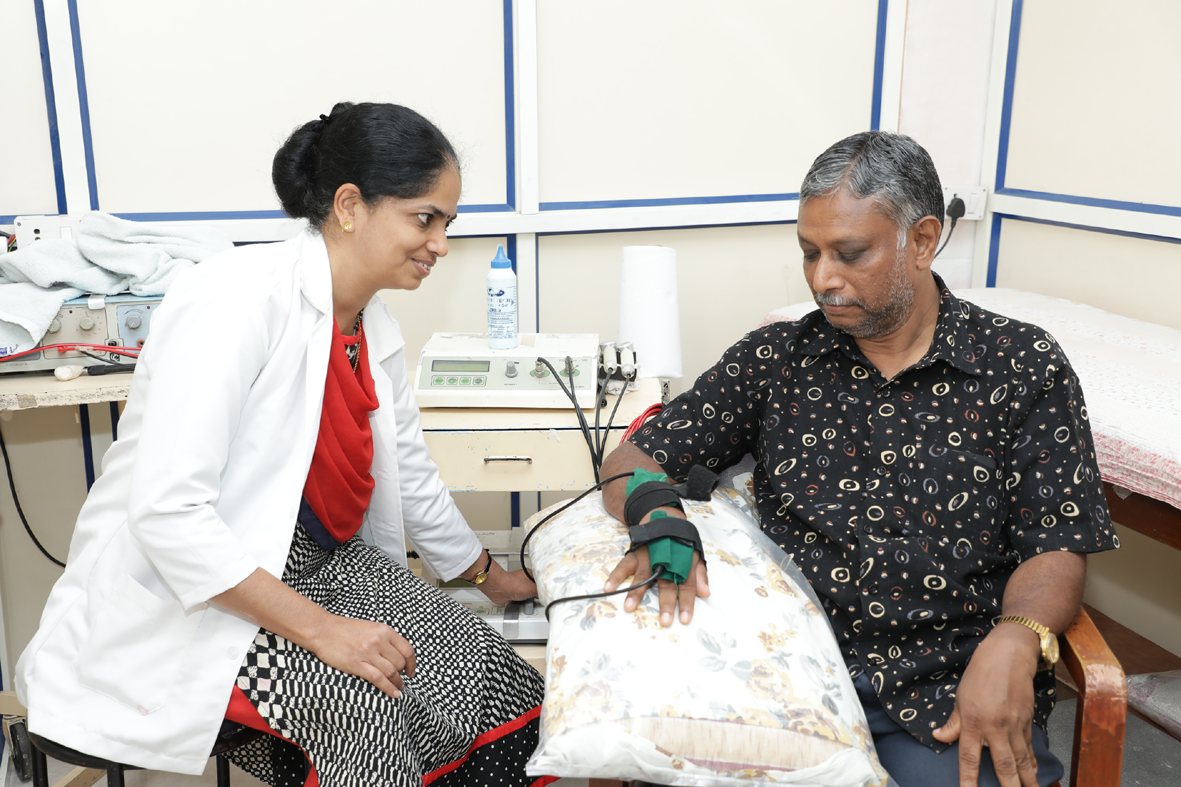Dr Sonia Gupta
Physiotherapy or physical therapy is the treatment of disease, injury, deformity or disability to improve the quality of life. Physiotherapy helps through physical rehabilitation, injury prevention, health and fitness.
Now a days this branch of medical science is associated with all the branches whether it is orthopaedics, neurology, pediatrics, gynecology, sports and many more. A surgeon performs surgeries but a physiotherapist helps and rehabilitates the person to the activities of daily living (ADL) and restores the healthy life style. Different branches of physiotherapy include.
* Geriatric Physiotherapy
* Sports Physiotherapy
* Orthopaedic Physiotherapy
* Pediatric Physiotherapy
* Physiotherapy works in various Neurological problems like stroke, multiple scleriosis, GBS, Parkinsons Disease.
* Neuromusculoskeltal problems like back pain, sports injuries, Fractures, Branchial Plexus injuries, Nerve injuries, Cervical pain, Shoulder pain, Arthritis etc.
Cardiovascular problems: Chronic heart disease and rehabilitation after a heart attack.
* Respiratory problems: Asthma, chronic obstructive pulmonary disease etc.
A Physiotherapist can help you to :
* Breathe easier
* Better movement
*Reduce pain
* Prevent injury
* Increase mobility
* Become stronger and flexible
Physiotherapy treatment depends upon various equipments and different therapies:-
* Exercise therapy : types of exercise depends upon the problems and conditions of the patient.
* Electro therapy- involves many equipments which are used preferably according to the disease or pain of the patient.
So the physiotherapy treatment depends upon the problems and the treatment plan prescribed by the concerned physiotherapist. Common treatment plan includes :-
* Joint manipulation to reduce pain and stiffness to increase flexibility.
* Soft tissues mobilization to increase mobility.
* Muscle re-education to improve control and prevent injury from reoccurring.
* Exercises designation to strengthen muscles to improve mobility and muscle power.
* Taping and strapping to improve control.
* Hydro-therapy to improve joint range and flexibility.
In the current pandemic, Covid-19 physiotherapy plays an utmost important role in maintaining the exercise capacity and thus improving the physical condition of the patient due to prolonged mechanical ventilation and immobilization.
Hospitalized patients even with moderate disease severity may spend weeks in hospital isolation resulting in decrease in their activity levels and so muscle strength and cardio-respiratory capacity may also reduce. Only a physiotherapist can encourage the patient to perform active exercises to maintain muscle strength.
Thus mobilization should be started as soon as possible when patient presents suitable clinical conditions. Mobilization includes neuro-muscular stimulation, therapeutic exercises, strengthening exercises of all the limbs and spine, prone positioning and most importantly chest physiotherapy including breathing exercises, postural drainage, vibration, cupping and spiometery.
Thus this profession helps to maintain health for people of all ages, helping patient to manage pain and prevent disease. A physiotherapist helps to encourage development and facilitate recovery enabling people to remain independent for as long as possible and thus boosting them to stay in work.
(The author is a physiotherapist)
Trending Now
E-Paper


